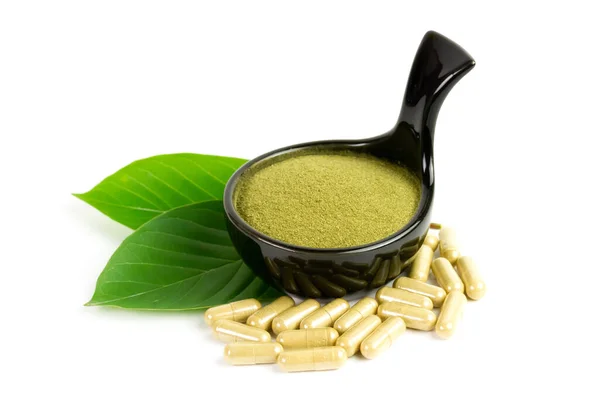Kratom, a tropical tree native to Southeast Asia, has garnered significant attention for its potential pharmacological effects, particularly when consumed in capsule form. These capsules typically contain powdered leaves from the Mitragyna speciosa plant, which contains numerous alkaloids, with mitragynine and 7-hydroxymitragynine being the most abundant and pharmacologically active compounds. The pharmacology of kratom capsules is complex and involves interactions with various neurotransmitter systems in the brain. Mitragynine, the primary alkaloid in kratom, acts as a partial agonist at the mu-opioid receptors MOR in the brain, similar to classical opioids like morphine and heroin. This interaction contributes to kratom’s analgesic effects, making it potentially useful for managing pain. However, mitragynine’s partial agonist activity at MOR also means it has a ceiling effect on respiratory depression, which may lower the risk of overdose compared to full agonists like morphine. Moreover, mitragynine interacts with other neurotransmitter systems beyond the opioid receptors. It modulates the activity of serotonin receptors, particularly 5-HT2A receptors, which are involved in mood regulation.

This interaction may underlie kratom’s reported mood-enhancing and antidepressant effects. Additionally, mitragynine acts on alpha-2 adrenergic receptors, leading to sympathomimetic effects, including increased alertness and energy. 7-hydroxymitragynine, although present in lower concentrations, is believed to be even more potent than mitragynine in its interactions with opioid receptors. It exhibits higher affinity and efficacy at MOR, which likely contributes to kratom’s potent analgesic effects. However, 7-hydroxymitragynine’s pharmacological profile also includes interactions with other receptor systems, such as alpha-2 adrenergic receptors and serotonin receptors, albeit to a lesser extent compared to mitragynine. Furthermore, kratom’s pharmacological effects are not solely attributable to mitragynine and 7-hydroxymitragynine. Other alkaloids present in the plant, such as paynantheine and speciogynine, may modulate its overall pharmacological profile. These alkaloids have been reported to exhibit calcium channel blocking properties, which could contribute to kratom’s muscle relaxant and antihypertensive effects.
The pharmacokinetics of kratom alkaloids also plays a crucial role in determining their overall effects. Following oral ingestion of kratom capsules, alkaloids are absorbed through the gastrointestinal tract and undergo first-pass metabolism in the liver before reaching systemic circulation. The bioavailability and elimination half-life of kratom alkaloids can vary among individuals due to factors such as genetics, liver function, and concomitant use of other substances. Despite its potential therapeutic effects, kratom carries risks, particularly with chronic use or at high doses. Tolerance and dependence can develop, leading to withdrawal symptoms upon cessation. Moreover, there have been reports of adverse effects, including nausea, constipation, dizziness, and hepatotoxicity, although the extent of these risks requires further investigation. Mitragynine and 7-hydroxymitragynine, along with other alkaloids present in the plant, contribute to its diverse pharmacological effects. While kratom capsules shows promise as a potential analgesic and mood-enhancing agent, its risks and long-term effects warrant careful consideration and further research.
